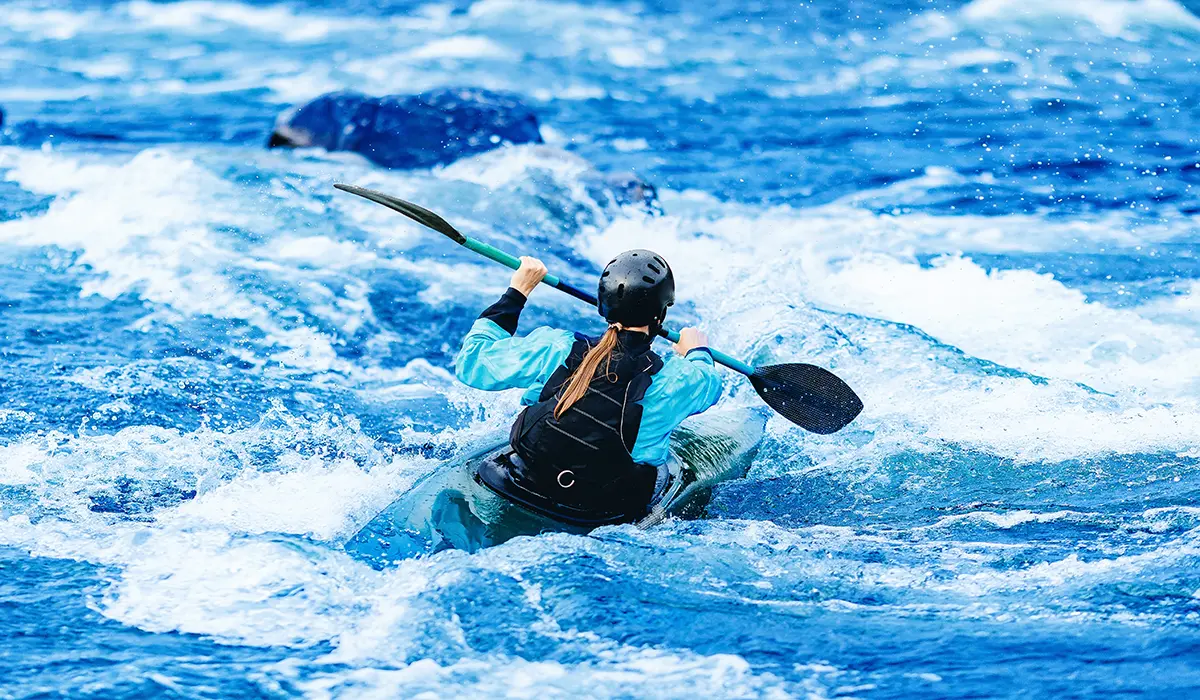
Essential Skills for Kayaking
The allure of kayaking is undeniable. Gliding effortlessly across tranquil waters, exploring hidden coves, and feeling at one with nature – it’s a call to adventure for many. But before you set off on your first kayaking trip, there are some essential skills for kayaking to acquire. Mastering these not only enhances your enjoyment but also ensures your safety on the water.
This guide dives into the essential skills for kayaking, categorised for beginners and those venturing further afield.
Essential Skills for Every Kayaker
These fundamental skills form the bedrock of safe and enjoyable kayaking, irrespective of your experience level.
- Proper Posture and Body Position: Maintaining good posture is key to efficient paddling and preventing fatigue. Sit tall with a slight arch in your lower back, core engaged, and knees slightly bent for stability. Imagine a line running from your ears through your shoulders and hips – keeping this alignment helps transfer power from your core to your paddle strokes.
- Basic Paddling Techniques: Mastering the forward stroke is paramount. Engage your core and rotate your torso with each stroke, keeping your arms relatively straight. Utilise the power of your core and larger muscle groups for a smoother, more efficient paddle. Additionally, learn reverse strokes for manoeuvring and stopping, and sweep strokes for turning.
- Entering and Exiting the Kayak: Practice safe entry and exit techniques, especially at the water’s edge. Lower yourself into the kayak smoothly, centring your weight for stability. When exiting, ensure the kayak is stable and step out with one foot at a time.
- Wet Exits and Re-entry: Unfortunately, capsizing can happen. Practice a wet exit (safely exiting a capsized kayak) in calm water. Learn how to re-enter your kayak (performing a sculling brace to pull yourself back onboard) – consider taking a course to gain proper technique.
- Self-Rescue Techniques: Basic self-rescue skills can be lifesavers. Learn how to empty water from your kayak using a bilge pump or paddling techniques. Understanding how to right a capsized kayak (especially important for solo paddlers) is crucial.
- Safety Gear and Equipment: Always wear a properly fitted life jacket. Familiarise yourself with the different types of paddles and choose one suited to your height and kayaking style. Carry essentials like sunscreen, a hat, water, and a whistle. Depending on the conditions, consider additional safety gear like a spray skirt (to keep water out of the cockpit) and a PFD (personal flotation device).
Skills for Navigating Different Waters
As you gain experience, you’ll likely explore more diverse water conditions. Here’s what to keep in mind for different environments:
- Flatwater Kayaking: On calm lakes and rivers, focus on efficient paddling techniques for covering longer distances. Practice maintaining a straight course and refine your turning manoeuvres.
- Moving Water Kayaking: On rivers with currents, learn how to read the water and identify hazards like rapids. Master manoeuvres like ferrying (angling the kayak upstream to maintain position) and eddy turns (using calm pockets in the current to turn around).
- Sea Kayaking: The open ocean presents unique challenges. Develop strong paddling skills for longer distances and rougher waters. Learn about tides, currents, and weather patterns to make informed decisions. Consider taking a sea kayaking course for in-depth instruction on navigation and safety techniques.
Beyond the Basics: Advanced Skills
For seasoned kayakers seeking to push their boundaries, here are some advanced skills to explore:
- Bracing and Manoeuvring: Master bracing techniques like low brace and high brace to maintain balance in rough conditions. Learn advanced turning manoeuvres like sculling draws and reverse sweep strokes for precise control.
- Rolling: The kayak roll allows you to right yourself after capsizing without exiting the kayak. This advanced skill requires practice and ideally, instruction from a qualified professional.
- Surf Kayaking: For the adventurous, surf kayaking involves riding waves in a specially designed kayak. This requires advanced skills, knowledge of ocean conditions, and strong surf awareness. Take lessons from experienced instructors before attempting this activity.
Continuous Learning is Key
Kayaking is a journey of continuous learning. As you gain experience, don’t hesitate to seek out further instruction through courses, workshops, or guided tours. Connect with local paddling clubs or communities to learn from seasoned kayakers and share your experiences.
Remember, safety is paramount. Always prioritise good decision-making and be prepared for the conditions. With the right skills, knowledge, and respect for the water, kayaking can be an incredibly rewarding and enriching experience. So, grab your paddle, embrace the adventure, and enjoy the journey!
For more information on Essential Skills for Kayaking contact Herts Young Mariners Base.
See all our Kayaking Courses at Herts Young Mariners Base.
